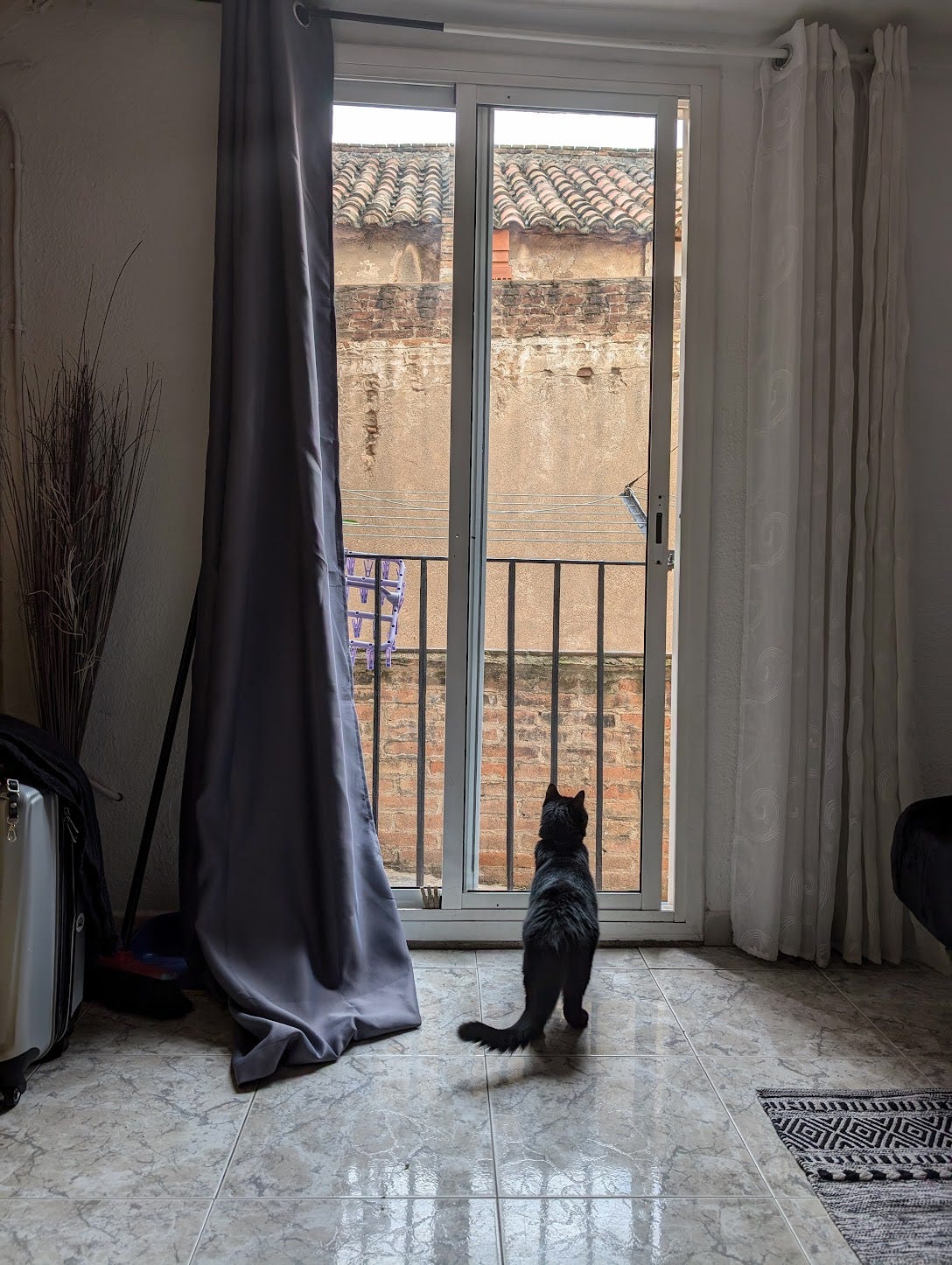From the US to Spain: How to Get a Pet Passport for Your Cat
You'll need to plan way ahead for this one!
Taking a cat overseas requires a lot of time, effort, and patience. It also costs a pretty penny, but you probably already knew that. If you’re a last-minute person, this is one of those instances where you might want to change your ways. Some countries require a planning period of up to six months. Any less, and Mr. Whiskers can’t go!
My passport process for Spain was no fairy tale. In fact, up until noon before we left, we still weren’t sure if I would get it in time to make the flight. And that’s even though my missus planned several months ahead. The vet dropped the ball—and there’s not much we could do about that.
In any case, here’s my passport story and the steps we followed. This is specifically for cats and the process of taking just one cat from the United States to Spain.
1. Do your research.
Before you start planning your beautiful trip to Spain with Mr. Whiskers, do your research. Here are some of the sources we used:
Law Firm: Missus hired a law firm to handle her immigration process, so she naturally asked them about mine as well.
Spain: The law firm provided this link to a page from Spain’s Ministry of Agriculture. We found a lot of other sources, but ultimately, this one took precedence.
USDA: The USDA also has information about traveling to Spain with a pet. It’s worth reviewing, but default to the information from the host country.
Airline: Choose an airline as soon as possible because they will have separate travel requirements, such as the size of the carrier or limited flight times for pets.
2. Book your flight.
The timeline for your cat’s paperwork will depend on your flight. Also, what happens if you get all the paperwork but can’t find a flight to take Mister Whiskers with you? All that preparation would be for nothing.
Missus booked our flights from March 2024—seven months ahead of flying. Her concern was ensuring I had a spot on the flight. Sure, I just go under her seat in my bag, but airlines generally limit how many pets are allowed on a flight.
For Delta, that limit is six. When she booked, I was the first four-legged passenger on that flight.
3. Contact a USDA-certified vet.
The first step in the process was to get an ISO-certified microchip. When Missus adopted me, she was told I was microchipped, but we never did register it under her name.
We were in Arizona when it was time to check for the trip, so Missus took me to the closest vet. To our surprise, I had no microchip at all. That meant we had to schedule an implant.
She booked the appointment at our next stop in New Mexico and called my Georgia vet to ask about the microchip. They suggested it might have been done but didn’t “take,” and no one knew because we never checked for it.
The vet recommended double-checking that it had “taken” about four weeks after implantation. We also scheduled all my Georgia appointments throughout August and September based on our flight time.
4. Get the ISO-certified chip.
Missus called a New Mexico vet and confirmed that the chip was ISO-certified and then scheduled my appointment. Booking the appointment actually took longer than the implantaton itself. I was out of her sight for maybe five minutes and then stuffed into my carrier and sent home.
By the time we hit the four-week mark, we had already traveled from New Mexico back to Georgia. My vet confirmed that the chip had “taken” and that we could move on to the next steps.
5. Get a rabies shot.
Spain requires a rabies shot after a chip implantation. This first shot is considered a “primary” rabies vaccination and must be administered at least 21 days before the travel date. I received mine about 55 days before traveling. Be sure to have the vet include the chip number on your rabies documentation.
As you can probably tell by this point, my Missus is no last-minute person. She plans way ahead so that we have time to adjust if something fails. That leads us to the next step. It’s purely optional but highly recommended.
6. Do a full checkup and round of tests.
I’ve traveled full-time with my missus since 2020 and this Friday will make it eight years since she first took me home. I’m becoming an old boy whether I like it or not. So, even though I’ve traveled like a champ, she didn’t want to run any risks of:
Me potentially being in pain for 10-16 hours of travel to Spain
Me potentially failing my USDA examination before flying to Spain
Consequently, Missus ordered a full checkup and a full round of tests. The good news is that I passed all the tests and most of the physical checkup. The bad news is that I needed dental surgery for the second time since she’s had me.
It was pricy, but I’m fortunate to have a human who prioritizes my health and comfort. So, I was off on the kitty gurney for surgery a few days later. She then administered antibiotics and pain medication by herself for a week.
My appetite has increased twofold since getting my teeth fixed. My last dental surgery was September 2022.
7. Conduct the USDA certification for the kitty passport.
This is where the vet messed up, and I’ll explain how so that you can potentially avoid this happening to you. Despite my Missus’ excellent planning, the vet didn’t do their research. More specifically, they didn’t read the USDA requirements they were supposed to follow. So much for being USDA-certified!
The USDA certificate must be completed within 10 days of traveling to Spain—and not a moment sooner. The vet scheduled my missus for a date that was about 8 days out. The vet then didn’t send the paperwork off until the following Monday—three days before our travel date.
In any other case, this might have been okay. However, Spain requires an ink endorsement, so it couldn’t be sent back electronically. It needed to be mailed back once the USDA endorsed it. We received that passport a mere three hours before we had to leave.
The only way to avoid this is to hold your vet to a tighter deadline and maybe schedule closer to the start of the 10-day span.
It was one of the most stressful experiences in our household. Missus was stressed and had already called Delta twice about potentially changing our flight. I fed off that stress and moped around behind her, climbing into the suitcase in hopes that she wouldn’t forget me. Or maybe if I blended in with every other black thing she owned, she wouldn't notice me!
Despite the trouble, we made it.
So, let me tell you that the vet’s office didn’t stop at just getting my passport late. They also misspelled my Missus’ name and our home address. We had to wait while they created a letter explaining they had made an error.
Thankfully, when we arrived in Spain, the Spaniards were more amused that Missus had taken a kitty from all the way in the US than my paperwork. The immigrations officer who greeted Missus pulled her window open and climbed headfirst out of her booth. She was hanging by the waist while asking if she could pet the kitty.
She then pointed us to the law enforcement officials who handled animal imports. They scanned the documents, scanned my chip, and sent me on my way. They, too, couldn’t believe Missus had traveled with me from so far away and how calm I was.
But just like that, I had moved to Spain!
The whole process cost about $3,000—including vet visits and my flight.






